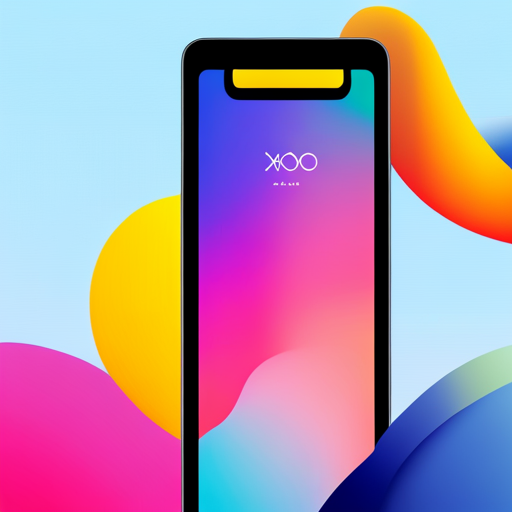This article aims to delve into the intricacies of decoding XOXO texts and mastering the art of response.
XOXO, a symbolic representation of hugs and kisses, has been a widely recognized expression of affection since the 1890s. Originating in the late 1950s, it has become a common sign-off in text messages, particularly in the U.K.
However, understanding the true meaning behind an XOXO text requires careful consideration of the sender’s culture and relationship dynamics. It is crucial to avoid making assumptions about the sender’s intentions, as XOXO can convey flirtatiousness, friendliness, or simply be a habitual expression.
This article will explore the key factors to consider when responding to an unwanted XOXO text, emphasizing the importance of setting boundaries and expressing one’s feelings politely.
With a range of over 20 possible responses, selecting the most appropriate one depends on the sender’s relationship and the context of the message. Taking the time to craft a thoughtful response ensures effective communication of one’s emotions and intentions.
Just The Essential Highlights
- XOXO is a symbolic representation of hugs and kisses commonly used in text messages, especially in the U.K.
- The meaning of an XOXO text depends on the sender’s culture and relationship dynamics.
- Crafting a thoughtful response ensures effective communication of emotions and intentions when receiving an XOXO text.
– Different responses should be chosen based on the relationship with the sender and the nature of the relationship.
Decoding XOXO Texts:

Decoding XOXO texts involves mastering the art of responding to these messages in a way that aligns with the established understanding that XOXO represents hugs and kisses and signifies fondness between friends, couples, and crushes.
The origin of XOXO can be traced back to at least the late 1950s, although the exact origins remain unknown. X represents a kiss and O represents a hug, with X coming to symbolize a kiss in the 1890s. It is commonly used in the United Kingdom as a sign-off in text messages.
However, it is important not to make assumptions about the sender’s intentions when receiving an XOXO text, as it can be flirty, friendly, or simply a habit for the sender. Different responses should be chosen based on the relationship with the sender, and it is crucial to consider the sender’s culture when interpreting the meaning of an XOXO text.
Origin and Meaning

The origin and meaning of the term XOXO remain somewhat uncertain, but it is widely recognized as a symbol of affection and is commonly used among friends, couples, and crushes.
The X in XOXO is believed to represent a kiss and dates back to the 1890s, while the O represents a hug.
The exact origin of XOXO is unknown, but it is thought to have been in use since at least the late 1950s.
XOXO is frequently used as a sign-off in text messages, particularly in the United Kingdom.
It can have different meanings depending on the sender’s culture and intentions.
It can be flirty, friendly, or simply a habit for the sender.
When receiving an XOXO text, it is important to consider the relationship with the sender and set boundaries if necessary.
Choosing the Right Response

When considering how to appropriately reply to an XOXO message, one should carefully select a suitable response based on the nature of the relationship with the sender.
The response to an XOXO text can vary depending on the level of closeness between the sender and the recipient. For close friends or romantic partners, a reciprocal XOXO or a similar expression of affection can be appropriate. However, for more casual acquaintances or professional relationships, a simple thank you or a friendly response without the XOXO may be more suitable.
It is also important to consider cultural differences when interpreting the meaning of an XOXO text. Some cultures may view it as a flirty gesture, while others may view it as a friendly sign-off.
Ultimately, the chosen response should reflect the sender’s intentions and the recipient’s comfort level in the relationship.
Frequently Asked Questions
How has the meaning of XOXO evolved over time?
The meaning of XOXO has evolved over time. Originally, X represented a kiss and O represented a hug. XOXO is now used as a sign of fondness between friends, couples, and crushes. Its exact origin is unknown, but it has clear origins dating back to at least the late 1950s.
Are there any cultural differences in the interpretation of XOXO texts?
Cultural differences in interpreting XOXO texts exist. The meaning and significance of XOXO may vary across cultures. Understanding the sender’s cultural background is crucial for accurately interpreting the intention behind the XOXO text.
What are some common misconceptions about XOXO texts?
Common misconceptions about XOXO texts include assuming the sender’s intentions, interpreting it solely as a romantic gesture, and not considering cultural differences. Clear communication, setting boundaries, and understanding the context are important in responding to XOXO texts.
How can one effectively set boundaries when receiving an XOXO text?
To effectively set boundaries when receiving an XOXO text, one can assert their preferences and communicate openly about their comfort levels. It is important to be clear and direct in expressing one’s feelings and expectations regarding the use of XOXO.
Are there any tips for responding to an unwanted XOXO text in a polite manner?
Tips for responding to an unwanted XOXO text in a polite manner include being considerate of the sender’s feelings, expressing gratitude for their sentiment, and politely redirecting the conversation. It is important to set boundaries and communicate your feelings clearly.
